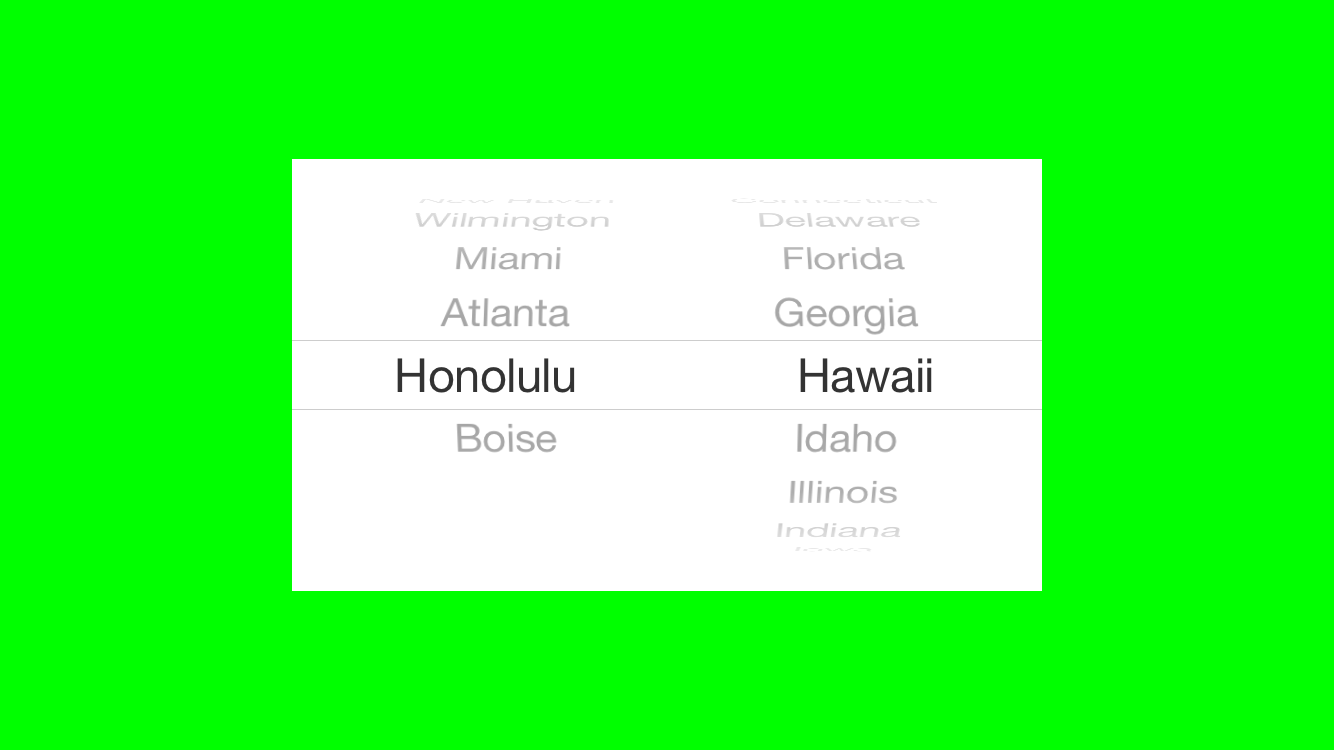
When you match a city with its state,
the
View’s
background
color
will turn
green.
A
UIPickerView
had a “selection indicator”
(a plastic shield)
in iOS 6:

See
Picker
in the
Human
Interface Guidelines.
By default, the dimensions of a
UIPickerView
on iPhone 6 are
375 × 216 pairs of pixels.
You could
scale
a
UIPickerView
(and
here’s
an example),
but don’t.
Each column of a
UIPickerView
is called a
component.
Our
UIPickerView
has 2 components,
numbered from left to right starting at 0.
AppDelegate
ViewController
is also the
UIPickerViewDataSource
and the
UIPickerViewDelegate.
View
Every
UIPickerView
must have a
data
source
object,
which provides it with the number of components and
the number of rows in each component.
A
UIPickerView
must also have a
delegate
object,
which provides it with the string (or
picture)
to be displayed in each row.
(Isn’t it strange that the method
pickerView(_:titleForRow:forComponent:)
belongs to the delegate, not the data source?)
The data source
and the delegate
will often be the same object.
For example,
our
ViewController
acts as the data source and delegate of the picker view.
The
UIPickerView
has the same dimensions as the
UIDatePicker
we saw
here.
375 is the width of the iPhone 6 screen in portrait orientation.
pickerView.frame = (-187.5,-108.0,375.0,216.0)
init(viewController:)
method of the
View,
initialize the components of the picker view to random positions by calling the
selectRow(_:inComponent:animated:)
method of the picker view.
for var component = 0; component < pickerView.dataSource!.numberOfComponentsInPickerView(pickerView); ++component { let n: Int = pickerView.dataSource!.pickerView(pickerView, numberOfRowsInComponent: component); //Convert n from plain old Int to UInt32. //Pick a random number in the range 0 to n-1 inclusive. //Convert the random number from UInt32 to plain old Int. let row: Int = Int(arc4random_uniform(UInt32(n))); pickerView.selectRow(row, inComponent: component, animated: true); } if pickerView.selectedRowInComponent(0) == pickerView.selectedRowInComponent(1) { backgroundColor = UIColor.greenColor(); } else { backgroundColor = UIColor.redColor(); }Can we avoid having to write the
if
in two different places?
pickerView:viewForRow:forComponent:reusingView:.